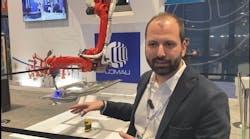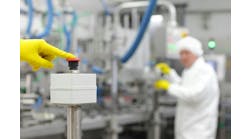Distribution Versus Direct: How to decide where to buy automation system components
Dan Hebert is a former senior technical editor for Control,Control Designand Industrial Networking.
As recently as 2000, when I was still working as a real engineer, the only way for most machine- or robot-builder OEMs to buy automation components was through a distributor. High-volume OEMs might have been able to bypass the local distributor and go straight to the supplier for better pricing, but these deals were rare and negotiated on a case-by-case basis.
But now, more automation suppliers are jumping on the direct sales model bandwagon and cutting out the middlemen in the distribution network. Purchasing directly can provide benefits in some cases, but in other instances it may be best to use a distributor.
Seeing the value to OEM customers of both approaches, Endress+Hauser sells some products through distribution and others directly.
“We have a unique sales model in the United States, made up of manufacturer representatives and direct sales, which provides OEMs with the maximum amount of flexibility,” says Kevin Bischoping, vice president of sales at Endress+Hauser.
Also Read: Unlocking Automation Systems for Higher Business Responsiveness
For OEMs needing to quickly purchase relatively simple instruments, Endress+Hauser recommends going direct. “E-direct provides OEMs with a quick, effective way to purchase entry-level instrumentation. OEMs can order 24/365, and products are attractively priced with tiered quantity discounts,” adds Bischoping.
As Bischoping relates, the direct sales model allows suppliers to offer lower prices and round-the-clock availability. Another characteristic of online purchases is complete control and responsibility by the buyer over just what’s purchased. This can be great when buying airline tickets for those with hard-to-spell last names, but it can introduce complications when product specification is more complex.
In those instances, it’s often best to buy through distribution even if it costs a bit more, because getting just what you need is more important than saving money. “Our sales representatives are close to the market and thus familiar with OEM issues, allowing them to provide engineered solutions tailored to meet specific application needs,” notes Bischoping. Another reason to buy through distributors is the ability to offer complementary products and to make sure all of the purchased products will work together, such as a flowmeter and a control valve.
Rockwell Automation favors the distribution model, as it believes it provides advantages for OEM customers. “Using distributors allows selling resources to become more intimate with OEM customers and their applications and to engage domain experts where required,” observes Rod Michael, director of global market access at Rockwell Automation.
“In North America, Rockwell Automation’s distribution network provides OEMs with a broader portfolio of supplier’s products and with customized supply-chain solutions such as bundling, kitting and line stocking. Additionally, distributors provide the necessary local support and inventory to end-user plant locations where OEM machinery is ultimately commissioned,” explains Michael.
Distributors provide concrete benefits for some OEMs, the direct sales model for others. “The direct sales model offers the shortest path between the product and the customer, which means less markup along the way,” states Gary Marchuk, the business development manager at AutomationDirect.
AutomationDirect and some other automation suppliers pass these savings on to OEMs and other customers in the form of lower prices, free shipping and free technical support. AutomationDirect touts its low prices, and it’s easy enough to compare their prices to other similar automation components, as they often offer tables and charts doing just that on the website and in ads. They also offer free two-day shipping on most orders.
AutomationDirect and others also offer free technical support via phone, which may or may not be more valuable to you than the support offered by a local distributor. On the one hand, phone support is usually quicker to access as a supplier can staff support lines with many tech-support experts, while a local distributor will have fewer support staff, and they will generally be less available. On the other hand, if your local distributor has the right support person familiar with your needs and that person is consistently available, this can be the way to go.
Main image courtesy of ammer at FreeDigitalPhotos.net





